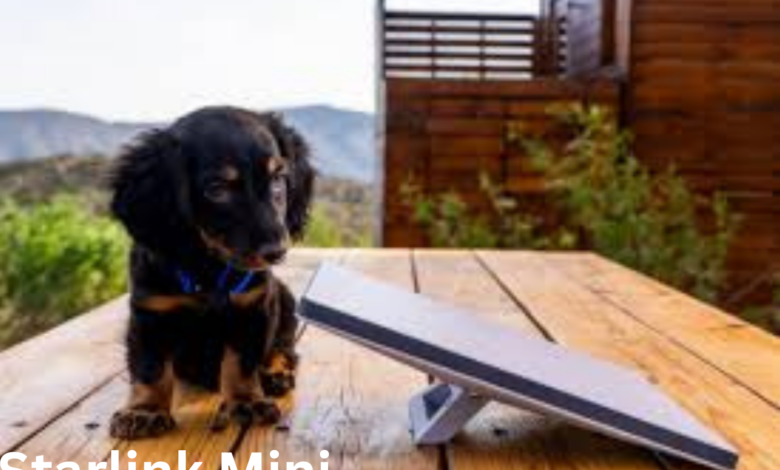Starlink Mini Revolutionizing Satellite Internet for Remote Areas

Imagine living in a remote area where the nearest grocery store is miles away, and reliable internet access feels like a distant dream. This has been the reality for countless individuals around the globe. Enter Starlink Mini—a groundbreaking solution designed to transform satellite internet connectivity in these underserved regions. With its promise of high-speed internet beaming down from space, Starlink Mini is set to revolutionize how people communicate, work, and thrive in isolated locales. Let’s dive into what makes this innovative technology so impactful and explore how it seeks to bridge the digital divide once and for all.
The Impact of Limited Internet Access in Remote Areas
Limited internet access in remote areas creates significant challenges for communities. Without reliable connectivity, residents struggle to access essential services such as healthcare and education. This lack of digital resources can hinder personal growth and limit economic opportunities.
Many people living in isolated regions depend on the internet for information and communication. The absence of online platforms restricts their ability to connect with friends, families, or potential employers. Consequently, social isolation often becomes a reality.
Moreover, businesses in these areas face constraints due to poor internet service. Entrepreneurs may find it difficult to reach wider markets or utilize e-commerce solutions effectively. This stifles innovation and economic development within local economies.
The digital divide remains a pressing issue that impacts not only individuals but entire communities. Addressing this gap is crucial for fostering equality and ensuring everyone has equal opportunities to thrive in today’s connected world.
Features and Benefits of Starlink Mini
Starlink Mini stands out with its compact design, making it easy to install and transport. This feature is crucial for users in remote areas where traditional internet infrastructure is lacking.
The system offers high-speed connectivity that rivals many urban broadband services. With download speeds reaching up to 150 Mbps, users can stream, work, and communicate without frustration.
Another significant benefit is low latency. Unlike older satellite systems plagued by delays, Starlink Mini provides a smoother online experience essential for video calls and gaming.
Moreover, the service operates seamlessly in various weather conditions. Users no longer need to worry about losing connection during storms or heavy rain.
Affordability also plays a key role. Starlink Mini aims to bridge the gap for those who previously struggled with expensive alternatives or no options at all.
How it Works: Understanding the Technology Behind Starlink Mini
Starlink Mini operates using a constellation of low Earth orbit (LEO) satellites. These satellites travel much closer to the planet compared to traditional geostationary systems, significantly reducing latency.
Each satellite beams internet signals down to ground stations and user terminals. The technology employs phased array antennas that can electronically steer their beams without moving parts. This results in faster connections and improved reliability for users.
The setup is designed for easy installation. Users simply position the terminal with a clear view of the sky, allowing it to connect seamlessly with passing satellites overhead. The system automatically adjusts its connection as satellites move into and out of range.
This innovative design means even remote locations can access high-speed internet, bridging gaps where traditional broadband fails. With ongoing advancements in satellite technology, Starlink Mini continues pushing boundaries in connectivity solutions.
Successful Implementation and Test Results in Pilot Areas
Starlink Mini has made significant strides in pilot areas, showcasing its potential to transform internet access. Initial test results have been promising, with users reporting stable connections even in challenging environments.
In rural regions where traditional providers struggle, the Starlink Mini system has demonstrated impressive speeds. Many users experienced download rates exceeding 100 Mbps. This level of performance is a game-changer for remote communities reliant on slow and unreliable service.
Feedback from pilot participants highlights ease of installation as a major advantage. The compact design allows setup without professional help—an essential feature for isolated locations.
Moreover, latency issues that often plague satellite internet services were noticeably reduced during tests. Users could engage in video calls and online gaming more effectively than ever before. These successful implementations affirm that Starlink Mini is not just an idea but a viable solution for bridging connectivity gaps across remote landscapes.
Competitors in the Market and Comparison to Starlink Mini
The satellite internet market is becoming increasingly competitive. Several companies are vying for a share, each with its own strengths and weaknesses.
One notable competitor is Amazon’s Project Kuiper. While still in development, it aims to provide global internet coverage similar to Starlink Mini. However, its timeline for deployment remains uncertain compared to the established presence of Starlink.
Another player is OneWeb, which focuses on low-latency connections primarily aimed at enterprise solutions. Although it’s gaining traction, many users find Starlink’s user-friendly model more appealing.
HughesNet and Viasat offer traditional satellite services but struggle with high latency issues and data caps that hinder performance in remote areas.
Starlink Mini boasts an innovative design that allows for quicker setup and portability—key factors when addressing the needs of underserved communities. This flexibility sets it apart from other options available today.
Future Possibilities and Expansion Plans for Starlink Mini
Starlink Mini is just the beginning of an ambitious vision. The potential for expanding satellite internet access to underserved regions is immense. With advancements in technology, the bandwidth and speed are expected to improve significantly.
Elon Musk’s plans include deploying more satellites into orbit. Each additional satellite enhances coverage and reduces latency, making Starlink Mini increasingly reliable.
Partnerships with local governments could facilitate greater outreach efforts. By collaborating with rural communities, they can tailor services that meet specific needs.
Exploring different pricing strategies may also attract users who couldn’t previously afford such connectivity options. Flexible payment plans could make this groundbreaking service accessible to a broader audience.
As demand grows, so does the opportunity for innovation in hardware design too. Future iterations of Starlink Mini might be even smaller and easier to install, bringing high-speed internet closer than ever before for remote areas everywhere.
Conclusion: Bridging the Digital Divide with Starlink Mini
Starlink Mini is poised to transform the landscape of internet access, especially in remote areas where traditional providers struggle. Its innovative satellite technology offers a reliable solution for communities that have long been underserved or completely disconnected.
By leveraging a constellation of satellites orbiting the Earth, Starlink Mini ensures high-speed connectivity with low latency. This capability opens doors for remote education, telehealth services, and e-commerce opportunities that were previously unreachable.
As more individuals gain access to the digital world, they can participate fully in modern society—whether it’s through online learning platforms or communication tools keeping them connected with loved ones. The potential benefits are profound: increased economic growth, improved quality of life, and stronger community ties.
Starlink Mini not only stands out among competitors but also pushes the boundaries of what’s possible in satellite internet technology. With ongoing expansion plans on the horizon, its impact will likely reach even more corners of the globe.
Bridging this digital divide might just be one small step closer with innovations like Starlink Mini ensuring that everyone has an equal opportunity to thrive in our increasingly connected world.


